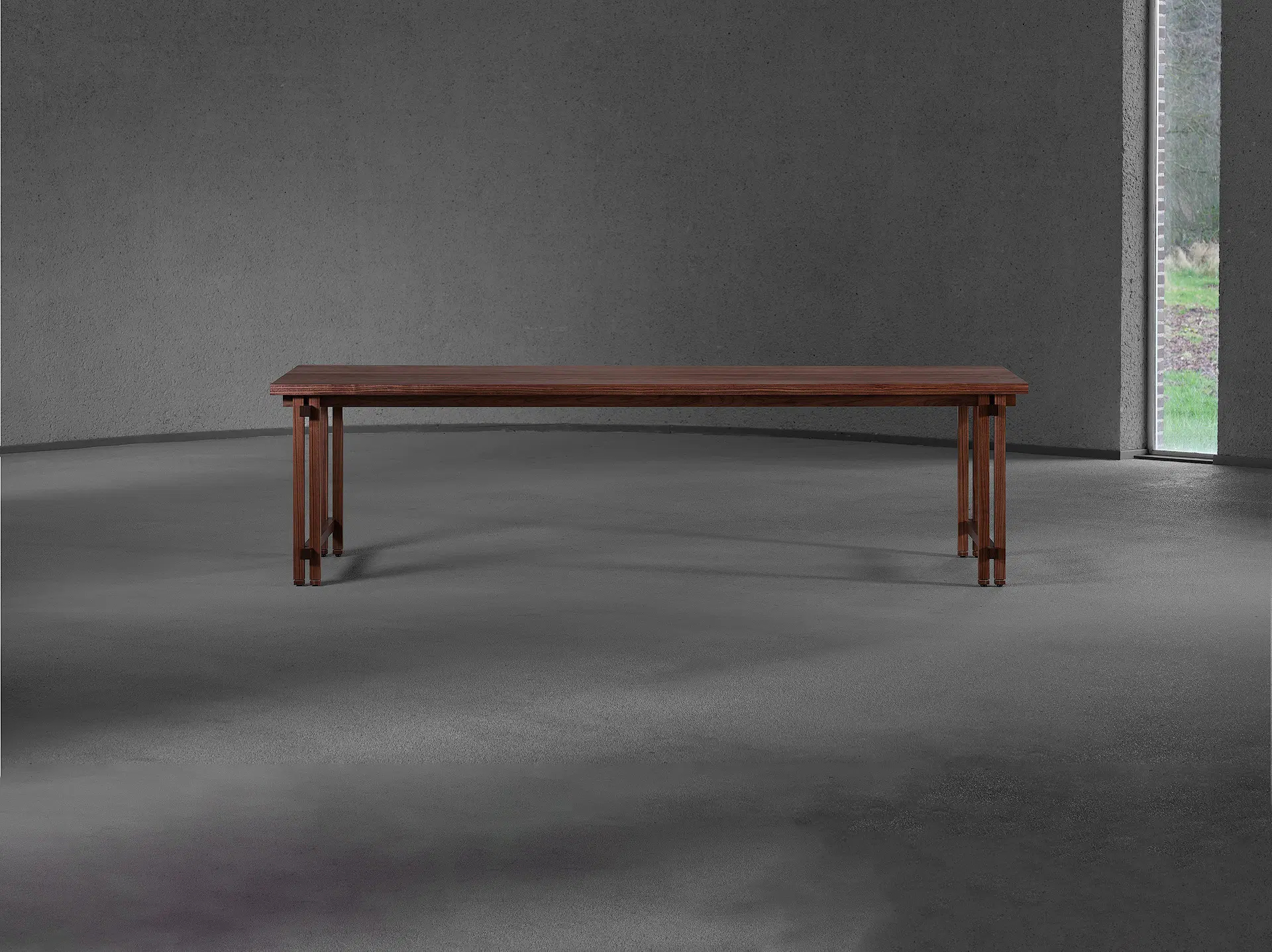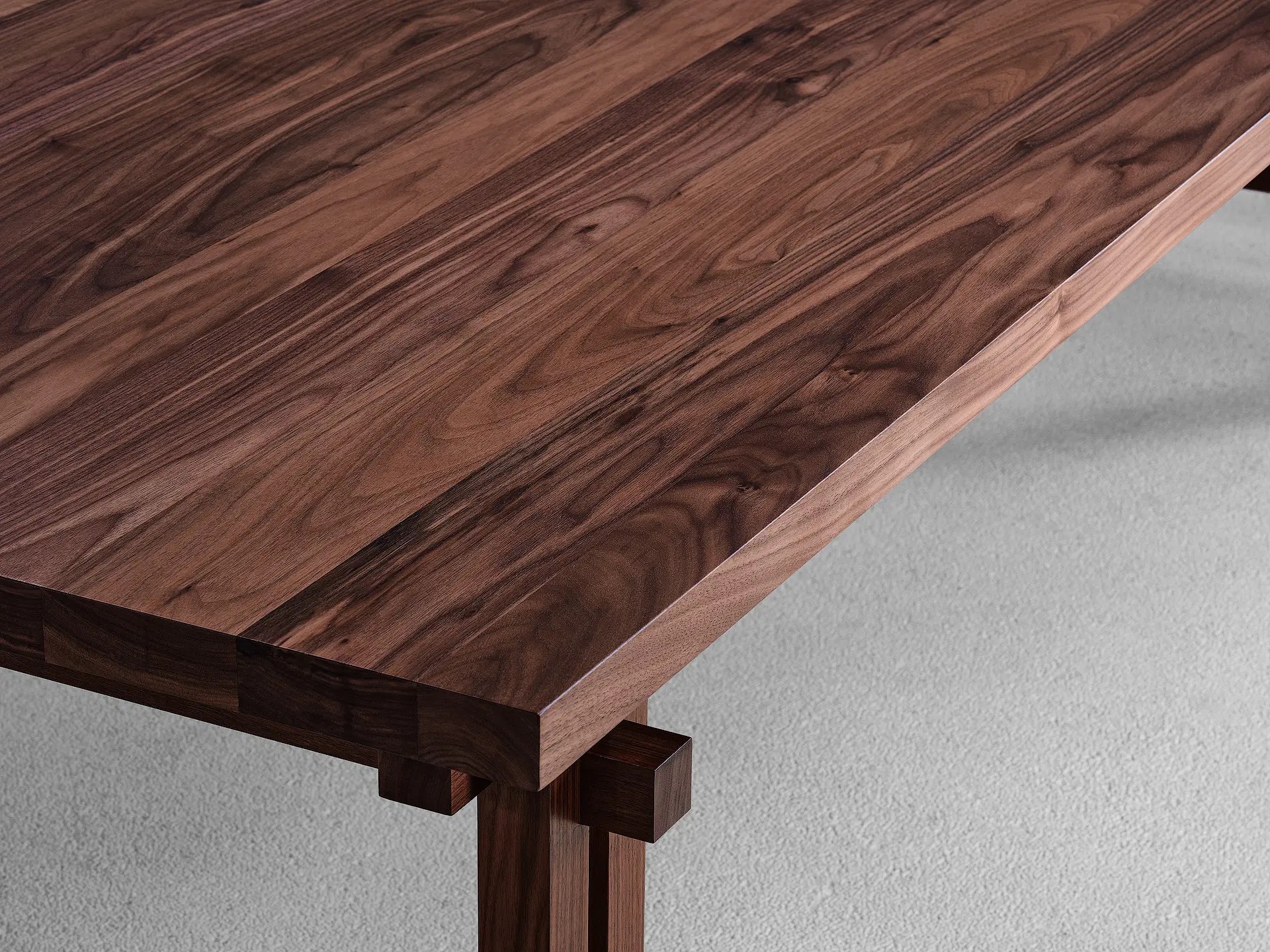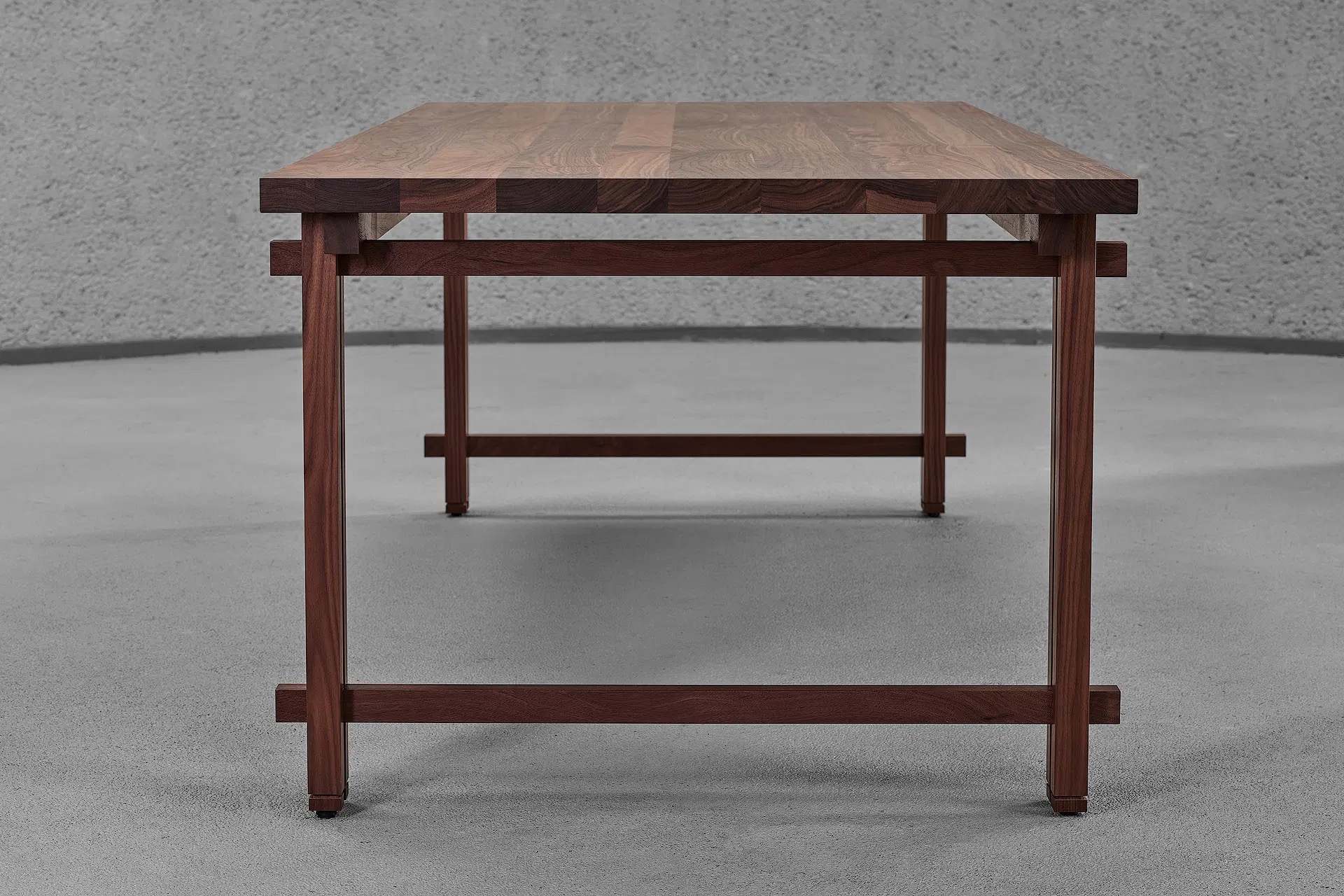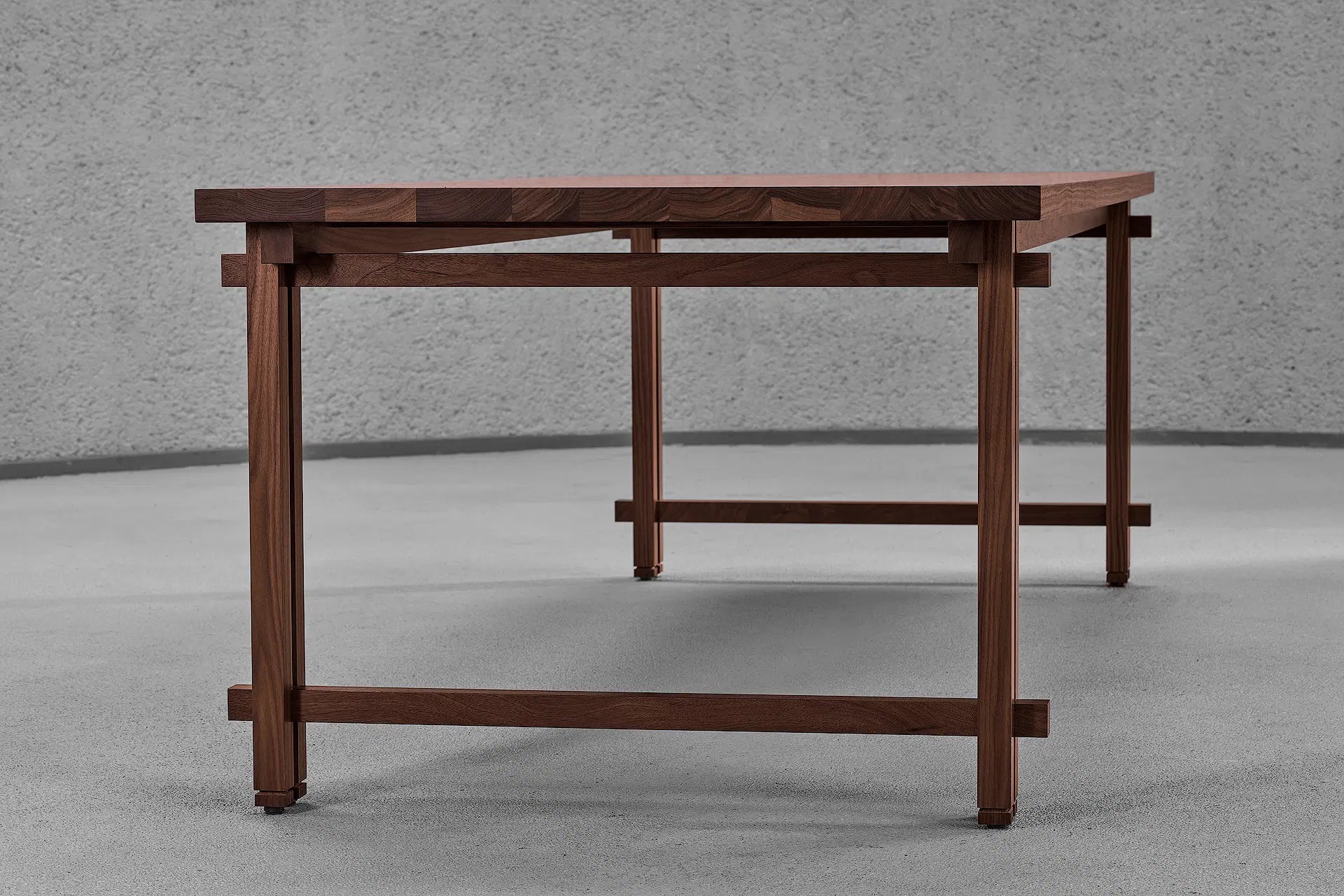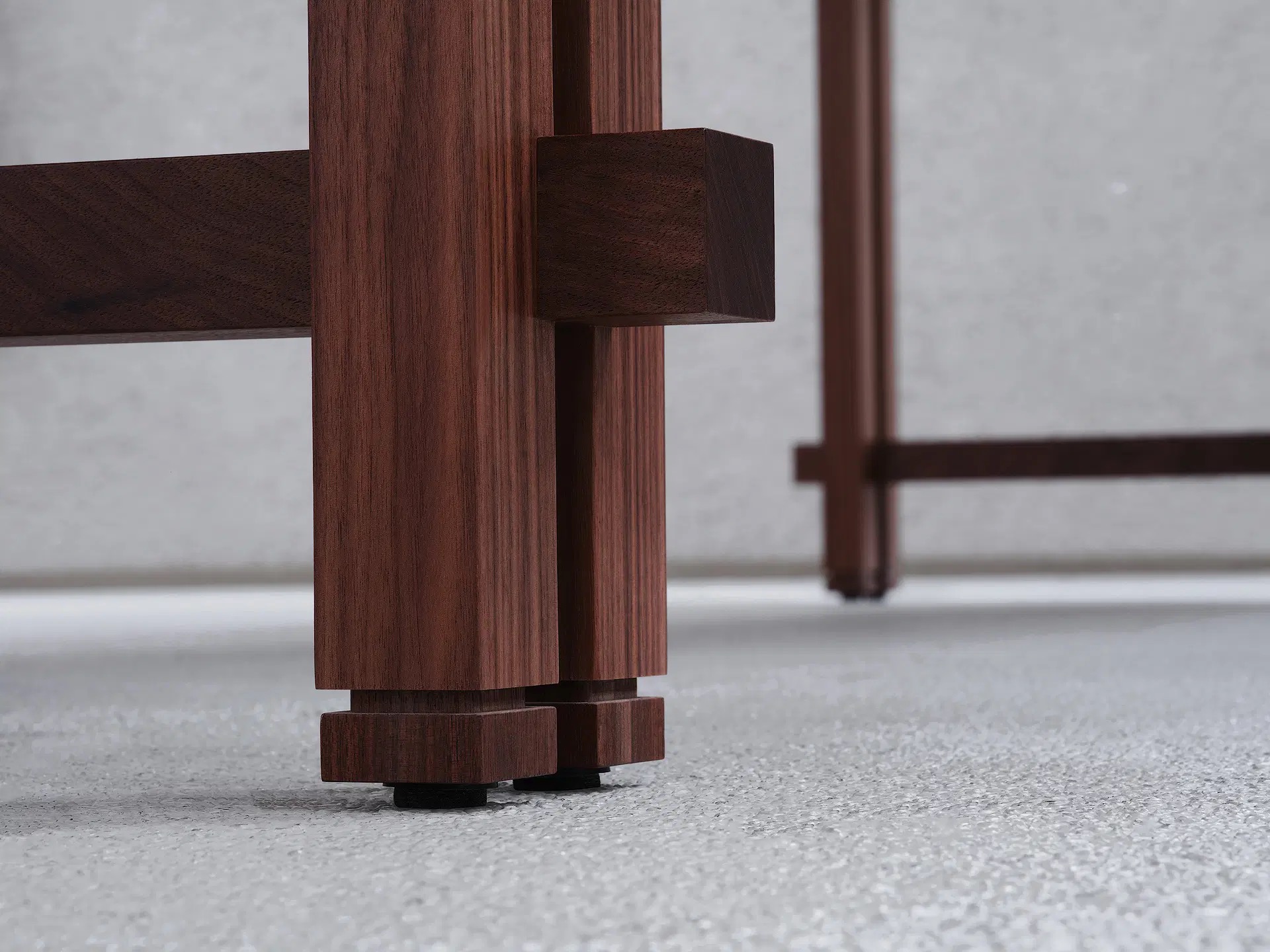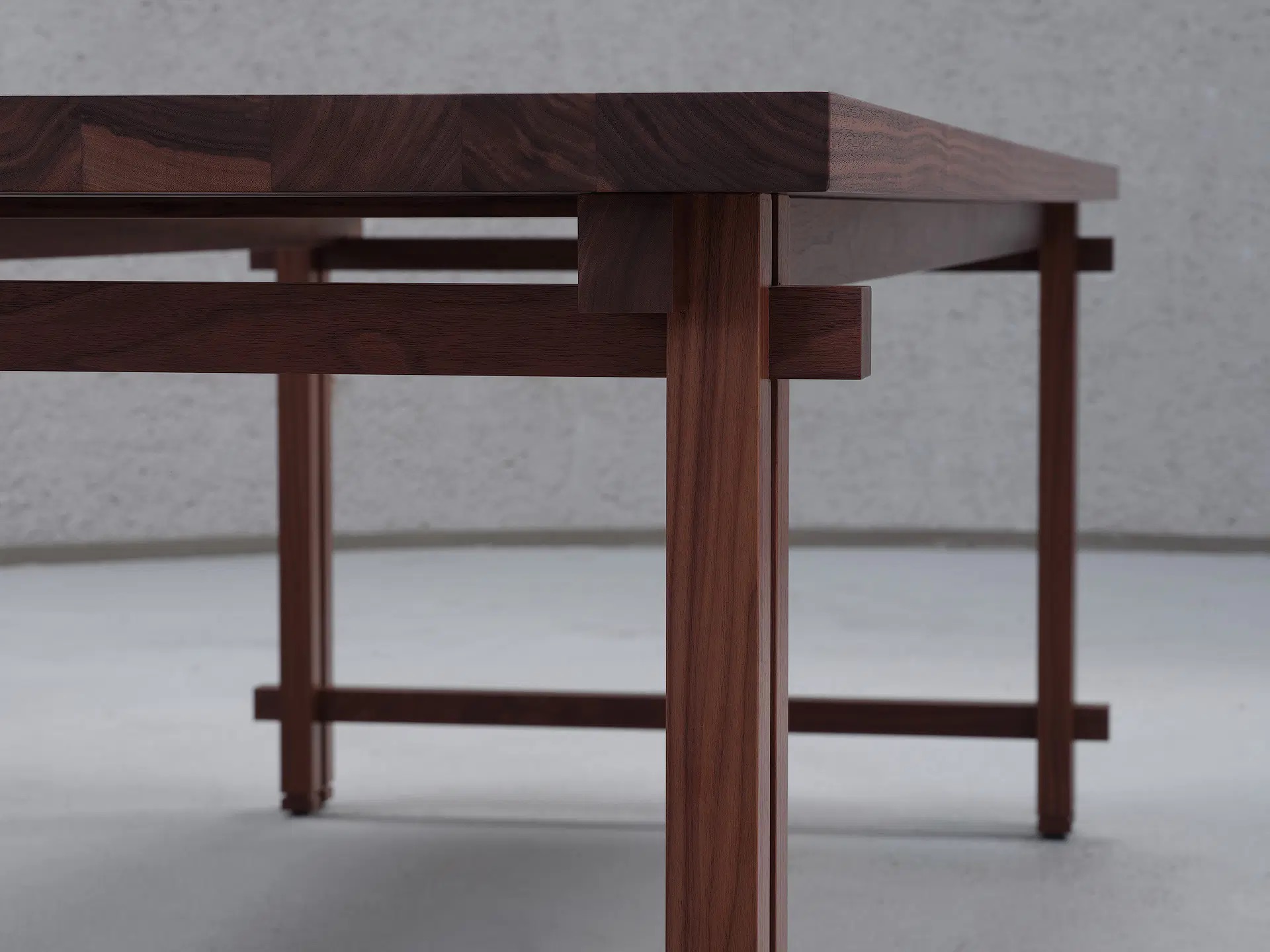De Stijl Table is a minimal table created by Amsterdam-based designer Julius Taminiau Architects for Øde Design. The name “Øde” is derived from the place the tables are crafted – in a factory established in 1754 – in Udenhout, formerly known as Ødenhout. Ode means tribute, homage. Hout means wood. The studio wanted to use this as a starting point. The respect for crafting something made by an expert with love and inspiration. The respect for universal beauty, unbound by time, timeless. The designer wanted to pay a personal tribute to “De Stijl” movement, which continues to inspire him. Another significant source of inspiration for this movement was Japanese culture. These two sources of inspiration are treated abstractly and simply, getting right to the point.
The sturdy, weighty table is built of genuine walnut wood. The table appears light and elegant because to the slim components. The components work together to produce a dramatic production. In some situations, the structure of the table can even be seen through. A sense of continuity and independence is created by the elements’ little continuation at the joints. They highlight the three dimensions, giving the table a more sculptural appearance. The table appears to be straightforward. There are sophisticated connecting procedures concealed behind this apparent simplicity. All the components and their connections come from a powerful unity, a solid whole, and only together.
